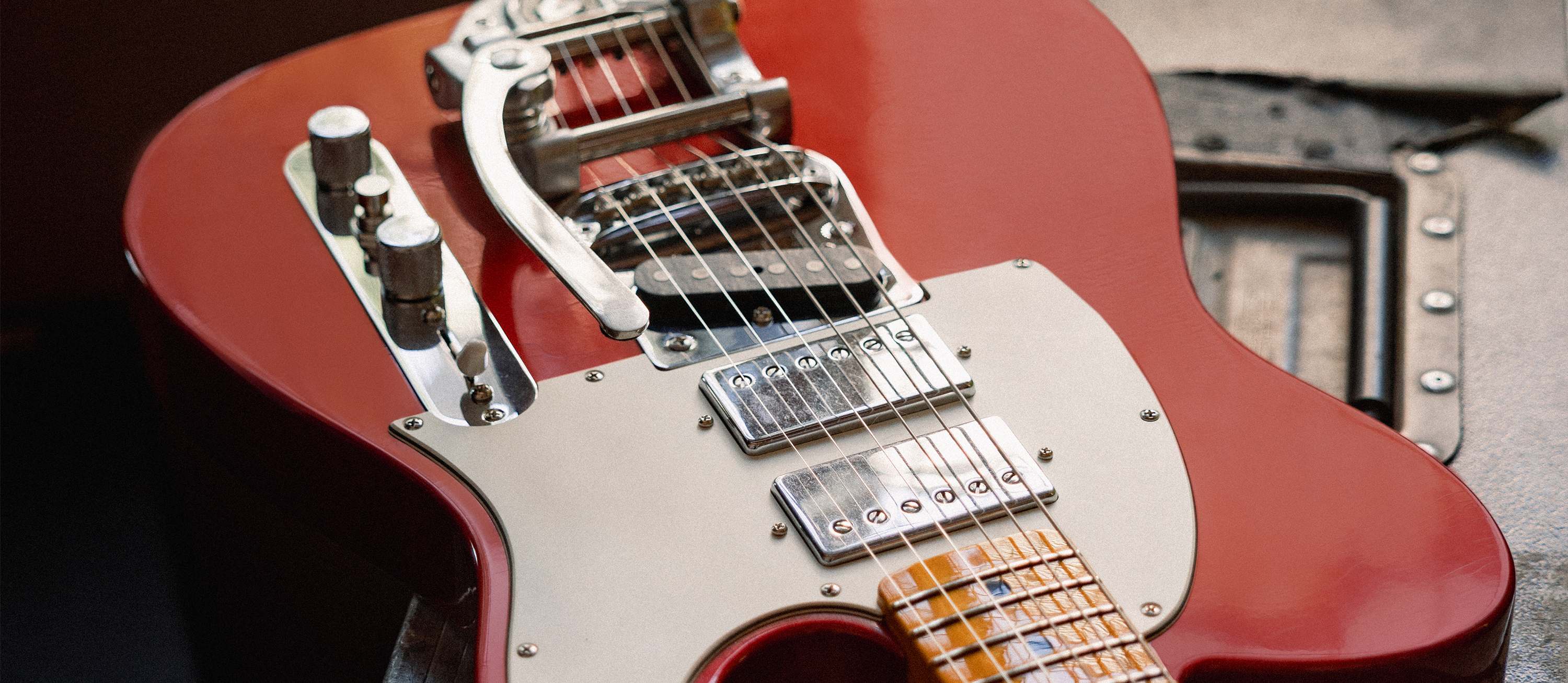Four Easy Ways to Discover New Ideas on Acoustic Guitar
Shake up your songwriting using these simple tips

An acoustic guitar can facilitate anything from the heaviest riff to the most delicate classical composition. But too often it’s merely used to strum a few chords in common time and standard tuning.
That’s a sure-fire way to write something utterly mundane.
If you’re shooting for something heartfelt and a little different, here are a some tips to eschew the tried and true and discover music unique to you.
1. Connect With Your Muse
As Tommy Emmanuel once said: Don’t let your instrument dictate to your songwriting by allowing your fingers to go “like dogs straight for the food bowl.” Be a cool cat and allow inspiration to come.
Don’t move a muscle until something tells you to, and stop moving your fingers when they start falling back on the familiar. Endeavor to establish a truly creative connection. Your muse is unique. Listen, and your music will be as well.
You might not be able to play like Michael Hedges, but neither could his contemporary Will Ackerman, who once told GP that his connection was his currency. It didn’t matter that he couldn’t play like Hedges, as long as he was delivering his own message with meaning.
2. Make an Unpredictable Attack
Mixing up the method of attack makes rhythms unpredictable, which in turn makes music more unique.
Try strumming one part of a song idea, then plucking the next. If you usually play with a pick, mix in some hybrid picking, or if you’re feeling adventurous, drop it altogether.
If you’re a fingerpicker by habit, try a plectrum for a change.
3. Tweak a Tuner or Two
A little turn of those metal keys attached to the headstock can open up a lot of fresh creative territory.
Try raising the second string up a half step, to C, and notice how that one little tweak transforms your opportunities in the key of C and its relative, A minor.
And speaking of minor keys, why not try a minor open tuning? Drop the third a half step from your favorite major tuning to set a minor mood.
Check out this live version of Sonny Landreth’s “Congo Square” below to hear how hip a simple blues progression can sound in open D minor.
4. Explore Beyond 4/4
There’s a good reason that 4/4 is also called common time – it’s everywhere. So why not mix things up?
It doesn’t have to be fancy math rock. You can even stick to quarter notes. 5/4 is the same deal with an extra beat, and 6/4 adds two, which is simply another half of a bar. Try extending the rhythm of a straightforward chord progression by one beat for a few measures.
Then try adding another one and perhaps switching chords for those two beats to establish a more interesting context from which to launch your feelings. How about adding one more beat or one more chord? You get the gist.
See Chris Cornell and Kim Thayil’s Soundgarden songs for myriad ideas that flow as if they were in 4/4 but are actually in slightly odd, quarter-note-based time signatures, such as “My Wave” (verse riff in 5/4), “Fell on Black Days” (6/4) and “Outshined” (7/4).
There’s no time like the present to shake things up and shine on through.
Get The Pick Newsletter
All the latest guitar news, interviews, lessons, reviews, deals and more, direct to your inbox!
Jimmy Leslie has been Frets editor since 2016. See many Guitar Player- and Frets-related videos on his YouTube channel, and learn about his acoustic/electric rock group at spirithustler.com.
“Write for five minutes a day. I mean, who can’t manage that?” Mike Stern's top five guitar tips include one simple fix to help you develop your personal guitar style
"It’s like you’re making a statement. And you never know where it’ll lead." Pete Thorn shares the tip that convinced Joe Satriani he was the right guitarist for the SatchVai Band










